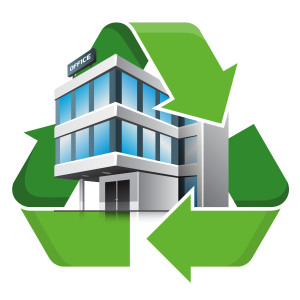
CENTRIA’s environmental product declarations set a trailblazing path for product life cycles.
CENTRIA released its first series of environmental product declarations (EPDs) in 2014 to review five of the company’s high-performance insulated metal wall panels. The continuing trend toward EPDs offers a major advantage to not only the customers, but the industry as a whole.
The findings for CENTRIA’s inaugural EPDs are based on an extensive life cycle analysis (LCA). The documents detail important environmental and sustainability considerations, such as raw material extraction and origin, product performance data, energy resources and a complete list of product performance standards. The product-specific EPDS review five of the company’s primary foam products, including profiled and non-profiled Formawall insulated metal panels, MetalWrap Series insulated composite backup panels, Versapanel and Versawall.
 The EPDs contain a wide variety of information, including detailed schematics of the manufacturing and packaging processes—from roll-forming to foam injection and shipping—as well as environmental indicator statistics through each and every product application variable, such as steel coil and foam insulation thickness.
The EPDs contain a wide variety of information, including detailed schematics of the manufacturing and packaging processes—from roll-forming to foam injection and shipping—as well as environmental indicator statistics through each and every product application variable, such as steel coil and foam insulation thickness.
CENTRIA’s new series of EPDs arrive on the heels of the Metal Construction Association’s (MCA) industry-wide, insulated metal panel EPD which takes an in-depth look at some of the industry’s leading IMPs, including CENTRIA foam products. Unlike a competitive analysis, the new EPD serves as an industry-wide tool by combining information from multiple manufacturers. While the MCA document defines IMP system boundaries as “cradle-to-gate,” or from material extraction and production to the finished product, CENTRIA takes the product life cycle a step further. Their “cradle-to-grave” system boundaries include environmental impacts beyond the factory—including installation, maintenance and waste—for more comprehensive statistics.
The documents are certified by UL Environment, a company that specializes in supporting the growth and development of environmentally friendly products, services and organizations, and will be updated every five years to leave room for continuous process improvements.
One of the major advantages of EPDs is their ability to impact LEED certification. According to the LEED v4 “Material & Resource Credit: Building Product Disclosure and Optimization” canon, one point can be awarded to building projects that showcase “at least 20 different permanently installed products sourced from at least five different manufacturers” that meet one of several accepted environmental disclosure criteria, including product-specific EPDs like CENTRIA’s. With five available EPDs from CENTRIA’s building envelope systems alone, the numbers are far from staggering.
Disclosing the source of raw materials can also generate LEED credits. The reports must include supplier extraction locations and review the company’s commitment to long-term ecologically responsible land use, among other factors. Once again, according to USGBC, if a project incorporates at least 20 different products from at least five different manufacturers that meet the criteria for sourcing of raw materials, it’s eligible for up to two points towards LEED certification.
EPDs serve as an excellent product comparison tool for the consumer—in this case, architects and contractors shopping for the most sustainable, high-performance products. The evaluation process, however, can be difficult, especially considering the wide scope of LCAs.
The most important thing, she notes, is a willingness to disclose detailed information about the manufacturing process and the products themselves, demonstrating a commitment to transparency in architectural systems.



